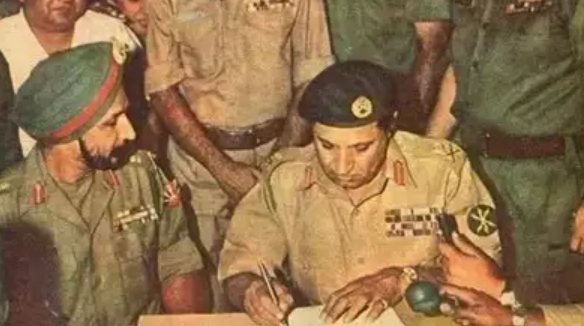1971 India-Pakistan War
The 1971 India-Pakistan War, also known as the Bangladesh Liberation War, was a military confrontation between India and Pakistan that occurred from 3 December to 16 December 1971. The war resulted in the independence of East Pakistan as the People’s Republic of Bangladesh.
Background
The roots of the conflict can be traced back to the Partition of India in 1947, which created the independent states of India and Pakistan. Pakistan was geographically divided into two parts: West Pakistan (present-day Pakistan) and East Pakistan (present-day Bangladesh), separated by nearly 1,600 kilometers of Indian territory.
East Pakistan, despite having a larger population, faced political, economic, and linguistic discrimination from West Pakistan. In 1970, the Awami League, led by Sheikh Mujibur Rahman, won a landslide victory in the national elections, securing an absolute majority in the National Assembly. However, the military leadership in West Pakistan refused to transfer power to the elected representatives.
Civil War and Refugee Crisis
On 25 March 1971, the Pakistan Army launched Operation Searchlight, a military crackdown on the East Pakistani population, particularly targeting the Bengali intelligentsia, political activists, and Hindus. The operation resulted in widespread violence, including the killing of civilians and the displacement of millions of people.
As a result of the crackdown, an estimated 10 million Bengali refugees fled to neighboring India, causing a severe humanitarian and economic burden. The Indian government, led by Prime Minister Indira Gandhi, expressed support for the Bengali struggle for self-determination and provided shelter to the refugees.
Indian Intervention and Diplomatic Efforts
India initially sought a diplomatic solution to the crisis, engaging in international efforts to pressure Pakistan to cease its military operations in East Pakistan. However, as the refugee influx continued and the humanitarian situation worsened, India began to provide covert support to the Bengali resistance movement, the Mukti Bahini.
On 3 December 1971, Pakistan launched pre-emptive air strikes on Indian airfields, leading to India’s formal entry into the war. India quickly responded with a coordinated land, sea, and air assault on East Pakistan.
Course of the War
The Indian Army, in cooperation with the Mukti Bahini, made swift progress in East Pakistan. The Indian Air Force gained air superiority within the first few days of the war, while the Indian Navy successfully blockaded East Pakistan’s ports, cutting off Pakistani supply lines.
On the eastern front, the Indian Army advanced rapidly, capturing key cities such as Jessore, Khulna, and Sylhet. The Pakistani forces, under the command of Lieutenant General A.A.K. Niazi, were outmatched and outnumbered.
Surrender and Aftermath
On 16 December 1971, Lieutenant General Niazi surrendered to the Indian Army at the Ramna Race Course in Dhaka, marking the end of the war. The instrument of surrender was signed by Lieutenant General Jagjit Singh Aurora, Commander of the Indian and Bangladesh Forces in the Eastern Theatre.
The war resulted in the independence of East Pakistan as the People’s Republic of Bangladesh. Sheikh Mujibur Rahman, who had been imprisoned in West Pakistan during the war, returned to become the first President of Bangladesh.
The 1971 India-Pakistan War also had significant geopolitical implications. The United States, which had supported Pakistan, saw a decline in its influence in South Asia, while the Soviet Union, which had backed India, gained a stronger foothold in the region.


